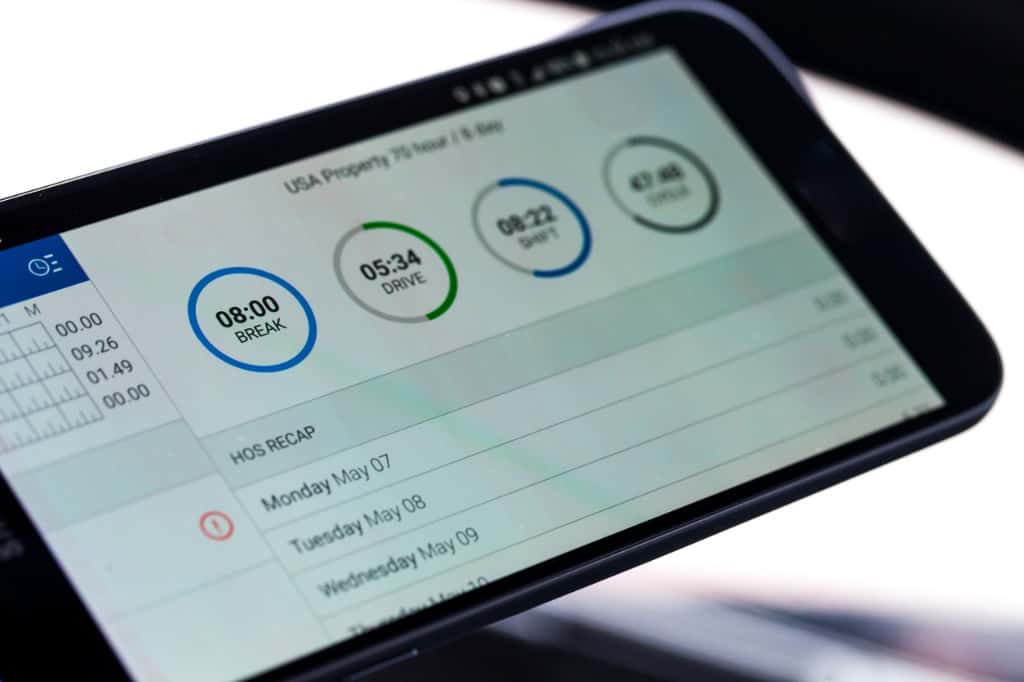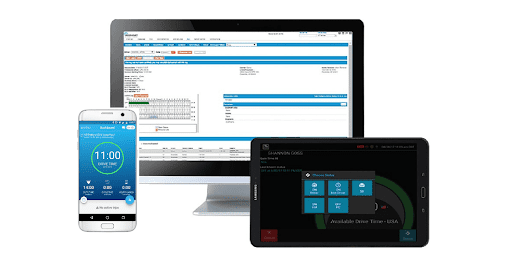In an industry that thrives on efficiency, technology can have an enormous impact. One of the most recent advances in technology has been the introduction of the electronic logging device, also referred to as an ELD.
An ELD automatically records the driving time and hours of service (HOS) of individuals who drive commercial vehicles. An ELD also records data from the vehicle’s engine, its location, and the number of miles traveled.
ELDs make it possible to provide real-time information about drivers and their vehicles. This information keeps everyone in the supply chain informed of their drivers’ statuses, which can be used to support fleet compliance, inspections, and other parts of the logistics network.
In this article, we’ll go over the features of an ELD. We’ll also explain current ELD requirements that impact truck owner-operators and anyone who provides fleet management assistance.
How Do ELD Devices Work?
Since an ELD records data automatically, it’s designed to communicate directly with the engines of commercial vehicles. ELDs record a range of data including:
- Engine hours
- Ignition status
- Engine data
- Driver’s location
- Miles driven
An ELD also sends the data about the engine and the vehicle’s GPS data to a designated server. Drivers can access their duty status logs through an ELD mobile app, which can also be synced with fleet management software to ensure full compliance and precise monitoring.
What is fleet management? Fleet management refers to the coordination of commercial cars and trucks, usually aiming to optimize efficiency and overall performance.
What Is the Purpose of an ELD?
The data provided by an ELD can serve the following purposes:
- Streamlines your process, reducing time spent on paperwork.
- Reduces time spent on roadside inspections
- Improves safety by monitoring driver habits and fatigue
- Boosts CSA scores by minimizing human error
- Increases fleet efficiency through engine monitoring and route planning
Below, we’ll address some of the most common questions about ELDs.
Who Needs an ELD?
Anyone that is required to maintain a record of duty status (RODS) can benefit from an ELD. However, current ELD mandates stipulate that you’re required to use an ELD if you have more than 8 days of duty status logs out of 30 days.
Is an ELD Mandatory?
As of December 2019, ELDs are mandatory for most commercial vehicles operating in the U.S. Canada passed a similar mandate in June of 2019, with a compliance deadline of June of 2021. Additionally, Canadian companies must have their ELDs certified by a third party, while U.S. companies can self-certify their devices.
Who Is Exempt From ELD Requirements?
ELDs are not required for:
- Vehicles manufactured before the year 2000
- Driveaway-towaway drivers delivering a vehicle as part of a shipment
- Drivers who maintain RODS for 8 days or less
- Drivers operating in a 150-mile radius
- Farm vehicles
However, since ELD mandates are still relatively new, it’s likely that the requirements will change in the near future.
Can Drivers Still Use Paper logs?
Paper logs are being replaced with ELDs. Truck owner-operators may still wish to keep a paper log in addition to an ELD, but the ELD will have the final say.
Paper logs are generally regarded as inaccurate because they are manually filled out, whereas ELDs are based on data gathered by technology. Traditional logbooks also add time to every worker’s daily hours, which costs more money for companies in the long run.
How Much Does an ELD Device Cost?
The costs of ELD devices are two-fold. There’s the initial cost of the hardware, and then there’s an ongoing cost of the monitoring service.
Some ELD options offer the following benefits:
- No additional hardware is needed
- Installation is simple and straightforward
- Connects directly to mobile apps
- Approved by the FMSCA
Best Features of ELDs
What is ELD going to improve about the industry? ELDs offer great product features that are currently not available from any other hardware. These features include hardware compatibility, dispatch features, and customizable plans.
Hardware Compatibility
Most ELD hardware can connect directly to the ELD port found on commercial vehicles. But before you invest in hardware, double-check that the connections are compatible.
Dispatch Features
Dispatch features help to coordinate fleets and improve the efficiency of the overall supply chain.
Customizable Plans
Smaller fleets will likely value plans that have the ability to scale along with the business as it grows. Look for service plans that will evolve with your business over time so that you can meet future demands without having to install completely different ELDs.
Advantages of ELDs
What is ELD best known for? ELDs offer many great advantages including:
- Streamlined route planning and management
- Improved fuel efficiency
- Reduced liabilities associated with bad driving habits
- Lower insurance premiums
- Increased safety records
- Higher CSA scores
Don’t forget that ELDs can also ensure that your fleet is in compliance with current mandates!
Disadvantages of ELDs
ELDs have not been met with universal praise. There are a handful of disadvantages, including:
- High initial cost for hardware
- Older vehicles may need to be adapted for new hardware
- Drivers have concerns about invasions of privacy
- It can take time to learn how to use this technology
It is crucial for companies to empathize with drivers when implementing ELDs. The technology comes with an increase in surveillance, which can be stressful even when your drivers aren’t doing anything wrong. Assure them that the new methods are designed to improve efficiency rather than to spy on their behavior.
AOBRD vs ELD
Industry veterans are likely familiar with automatic onboard recording devices (AOBRD). New mandates will replace these devices with ELDs, making the AOBRD a thing of the past.
ELDs record more data than AOBRDs, and vehicles that have AOBRDs will need to be modified so that they can accommodate the new ELD hardware instead.
Take your fleet to the next level
Now that you’ve learned about how ELD devices work and the current requirements associated with their use, you can truly understand how an ELD can vastly improve efficiency and reduce the strain that was historically shouldered by administrative personnel.
FAQ
You generally cannot run a commercial truck without an electronic logging device (ELD) if it’s involved in interstate commerce and falls outside certain exemptions, such as the 100 or 150-air mile rules for short-haul operations.
Local drivers, defined as those operating within a 100 or 150-air mile radius of their normal work reporting location, are generally exempt from the ELD mandate, depending on the specifics of their operations.
ELDs themselves typically do not include cameras; their primary function is to electronically record a driver’s Record of Duty Status (RODS). However, they can be integrated with additional equipment like onboard cameras as part of a comprehensive fleet management system.


